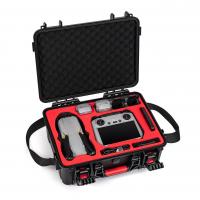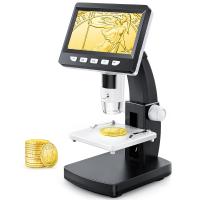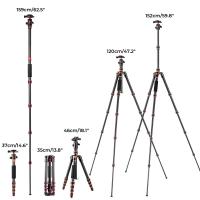How To Describe Bacteria Under A Microscope?
Bacteria under a microscope can be described as small, single-celled organisms that are typically rod-shaped, spherical, or spiral in shape. They are too small to be seen with the naked eye and require a microscope to observe. Bacteria can be stained with various dyes to enhance their visibility and distinguish different types. They may appear as clusters or chains, and their size and shape can vary depending on the species. Some bacteria have flagella, which are whip-like structures that allow them to move. Others may have pili, which are hair-like structures that help them attach to surfaces or other cells. Overall, bacteria are diverse and complex organisms that play important roles in various ecosystems and human health.
1、 Morphology

How to describe bacteria under a microscope? The answer lies in the study of morphology, which is the branch of biology that deals with the form and structure of organisms. When observing bacteria under a microscope, there are several key features to look for, including shape, size, and arrangement.
Bacteria can be classified into three main shapes: cocci (spherical), bacilli (rod-shaped), and spirilla (spiral-shaped). The size of bacteria can vary greatly, with some species measuring only a few micrometers in length, while others can be several hundred micrometers long. The arrangement of bacteria can also provide important information about their biology, with some species forming chains, clusters, or even biofilms.
In recent years, advances in microscopy technology have allowed scientists to gain new insights into the morphology of bacteria. For example, super-resolution microscopy techniques such as structured illumination microscopy (SIM) and stimulated emission depletion (STED) microscopy have enabled researchers to visualize bacterial structures at the nanoscale level. This has led to new discoveries about the complex organization of bacterial cells, including the presence of subcellular structures such as microcompartments and nanotubes.
Overall, the study of bacterial morphology is a critical component of microbiology, providing important insights into the biology and behavior of these ubiquitous microorganisms.
2、 Cell wall structure

How to describe bacteria under a microscope? One important aspect to consider is the cell wall structure. Bacteria are classified into two main groups based on their cell wall composition: Gram-positive and Gram-negative. Gram-positive bacteria have a thick peptidoglycan layer in their cell wall, while Gram-negative bacteria have a thinner peptidoglycan layer and an outer membrane containing lipopolysaccharides.
Under a microscope, Gram-positive bacteria appear purple after staining with crystal violet and iodine, while Gram-negative bacteria appear pink after counterstaining with safranin. This staining technique, known as the Gram stain, is widely used in microbiology to differentiate bacterial species.
Recent studies have revealed new insights into the cell wall structure of bacteria. For example, some bacteria have evolved to modify their cell wall composition to resist antibiotics. One such mechanism is the production of enzymes that break down the peptidoglycan layer, making the bacteria less susceptible to antibiotics that target this structure.
Another recent discovery is the presence of a protein called MreB, which forms a cytoskeleton-like structure in the cell wall of some bacteria. This protein is involved in maintaining the shape of the cell and has been found to be essential for the survival of some bacterial species.
In summary, describing bacteria under a microscope involves considering their cell wall structure, which can provide important information about their classification, staining properties, and antibiotic resistance mechanisms. Ongoing research continues to reveal new insights into the complex and dynamic nature of bacterial cell walls.
3、 Cellular arrangement

One way to describe bacteria under a microscope is by their cellular arrangement. Bacteria can be classified into different groups based on their cellular arrangement, which can be observed under a microscope. The three main types of cellular arrangements are cocci, bacilli, and spirilla.
Cocci are spherical or oval-shaped bacteria that can occur singly, in pairs, or in clusters. Bacilli are rod-shaped bacteria that can occur singly or in chains. Spirilla are spiral-shaped bacteria that can occur singly or in chains.
In addition to these traditional classifications, recent advances in microscopy and imaging techniques have allowed for more detailed observations of bacterial cellular arrangements. For example, some bacteria have been observed to form complex structures such as biofilms, which are communities of bacteria that adhere to surfaces and can be difficult to treat with antibiotics.
Furthermore, some bacteria have been observed to have unique cellular arrangements that do not fit into the traditional categories. For example, some bacteria have been observed to have a helical shape that is distinct from spirilla. These observations have led to the development of new classification systems that take into account the diversity of bacterial cellular arrangements.
Overall, describing bacteria under a microscope by their cellular arrangement is a useful way to classify and understand these microorganisms. With the development of new imaging techniques, our understanding of bacterial cellular arrangements is constantly evolving.
4、 Motility

Motility is one of the key characteristics of bacteria that can be observed under a microscope. It refers to the ability of bacteria to move independently, either through the use of flagella or by other means such as gliding or twitching. To describe bacterial motility under a microscope, one can use a variety of techniques such as wet mounts, hanging drop preparations, or agar stab cultures.
In a wet mount, a small amount of bacterial culture is placed on a microscope slide and covered with a coverslip. The slide is then observed under a microscope, and the movement of the bacteria can be observed. If the bacteria are motile, they will appear to be moving around randomly, often in a jerky or darting motion.
Hanging drop preparations are similar to wet mounts, but instead of placing the bacteria directly on the slide, a small drop of bacterial culture is suspended from a coverslip using a specialized apparatus. This allows for a more stable observation of bacterial motility.
Agar stab cultures involve inoculating a solid agar medium with bacteria and then using a sterile needle to make a small stab into the agar. If the bacteria are motile, they will move away from the stab line and create a visible pattern of growth.
Recent advances in microscopy technology, such as high-speed video microscopy and super-resolution microscopy, have allowed for even more detailed observations of bacterial motility. These techniques have revealed new insights into the complex mechanisms that bacteria use to move, including the role of surface appendages such as pili and the use of chemotaxis to navigate towards or away from specific chemicals in their environment.






































